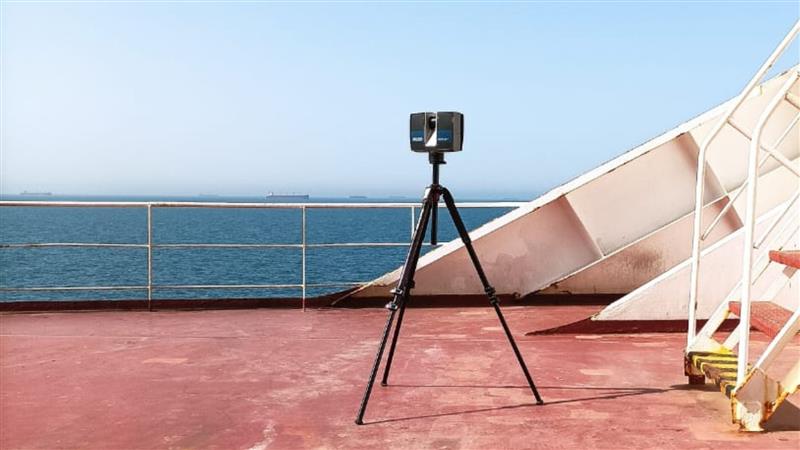How Can Laser Scanning Technology Aid in the Restoration of Indian Architectural Structures?
India has a diverse spectrum of architectural heritage, with remarkable ancient temples, forts, palaces, stepwells, colonial buildings, and many more – all possessing a rich cultural, historical and aesthetic significance. It can be very difficult to preserve structures like these — through weathering, pollution, seismic activity, human damage, and sadly, lack of detailed documentation the buildings have suffered. The future of the buildings may be altered through 3D laser scanning.

What are 3D Laser Scanning & 3D Scanning Services?
3D laser scanning is a method of capturing millions of data points (referred to as a "point cloud") of an object or structure that is non-destructive, and non‐contact, which creates a very precise digital record of shape, geometry, textures, and often even color too! And then, with processing and modelling software, this point cloud can then be converted into a 3D model or into 2D drawings. 3D scanning services can include scanning, data processing, creating models, producing as-built documentation, conducting virtual walkthroughs, generating condition assessments, etc.
Applications in Indian Architectural Structure Restoration
- Accurate Documentation and ‘As-built’ Documentation : Many heritage sites in India do not come with details of architectural drawings or historical records. 3D laser scanning produces accurate, up-to-date, as-built documents. With this technology, restorers can analyze existing conditions, measure deformations, detect cracks, distortions, and areas of deterioration.
- Planning Restoration and Conservation : Once a detailed model is completed, one can model restoration methodologies, plan all interventions without guesswork, preserve original features (carvings, ornate surfaces, mouldings) without damaging the originals, and even recreate completely missing parts, using the digital file as a template.
- Monitoring and Maintenance Over Time : Because scans will begin in a timely manner, the scans will be able to detect shifts over time - how a façade weathers, structural shifts due to subsidence or vibration, moisture intrusion, etc. - and preventative conservation will be preferable to reactive repair.
- Virtual Access and Public Engagement : 3D models and virtual walkthroughs will allow scholars, tourists, and communities to engage their heritage structures without the visitor being physically onsite. This includes using the scans for awareness, fund-raising, education, or even virtual tourism.
- Disaster Preparedness and Reconstruction : In the event of a natural disaster (earthquake, flood) or manmade damage, having detailed scanned data in 3D form supports decision making over proposing when reconstructing. Digital replicas can be thought of like an insurance policy for heritage.
Role of 3D Laser Scanning Companies in India :
India has numerous 3D laser scanning service providers who provide services for heritage, industrial, architectural and infrastructure purposes.
One notable example is Edge 3D Technologies, a 3D scanning service provider based in Bangalore, which offers laser scanning, modeling, heritage documentation, virtual walkthroughs and more. They utilize refurbished high end FARO laser scanners, which can capture up to 1 million points per second and convert those point clouds into detailed and accurate 3D models or 2D documentation.
Another case is RA Global, also known as Research and Advisory Global in Mumbai, which provides 3D laser scanning services for heritage preservation so that conservationists can digitally store, examine, and plan repairs for structures of historical significance. Other companies, like Fibrox 3D Technologies located in Vadodara, also provide heritage scanning services, digital inheritors are transmitted into an additional printing method without having their internals or delicate houses damaged. Like Edge 3D Technologies, which is a good example of a company focused primarily on architecture for laser scanning etc, there are the negative and neutral functional, economic, social etc places and before and after delivery of laser scanning / Li-DAR / as-built modelling etc.
Conclusion:
Repairing Indian architectural buildings requires both respect for traditional craftsmanship and the adoption of modern methods. The application of 3D laser scanning here in India, via specialised 3d scanning companies, enables us to represent heritage sites accurately, recover and record each of their details, monitor these sites continually, and restore sites more faithfully. Edge 3D Technologies, amongst a handful of other companies, is pioneering the adoption of these benefits by offering services that take heritage from the past to the present. As this technology becomes more accessible and cost-effective, we expect the uptake of these technologies to increase, thereby protecting India's architectural legacy for future generations.
#3dlaserscanningcompaniesinIndia #3dscanningservices #3dscanningcompany #3dlaserscanninginindia #3dscanningcompanies #3dlaserscanning